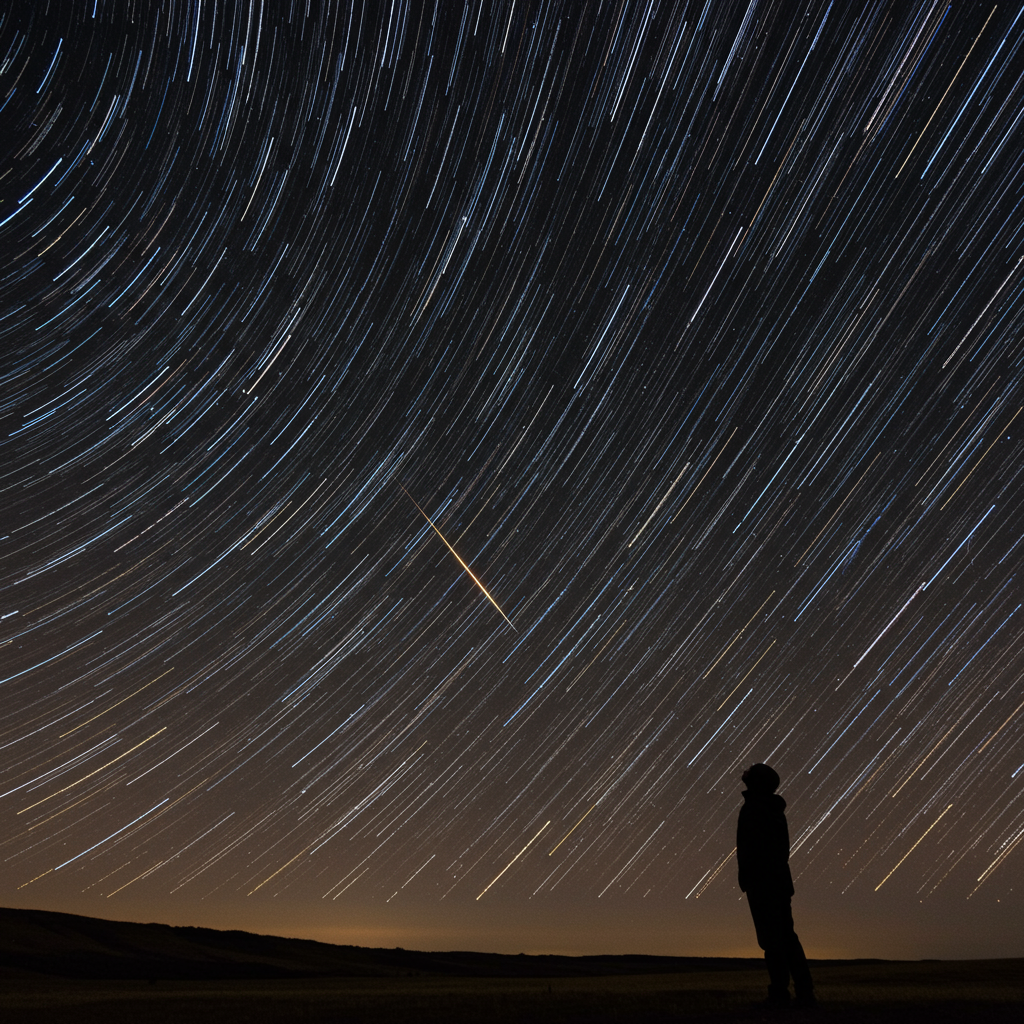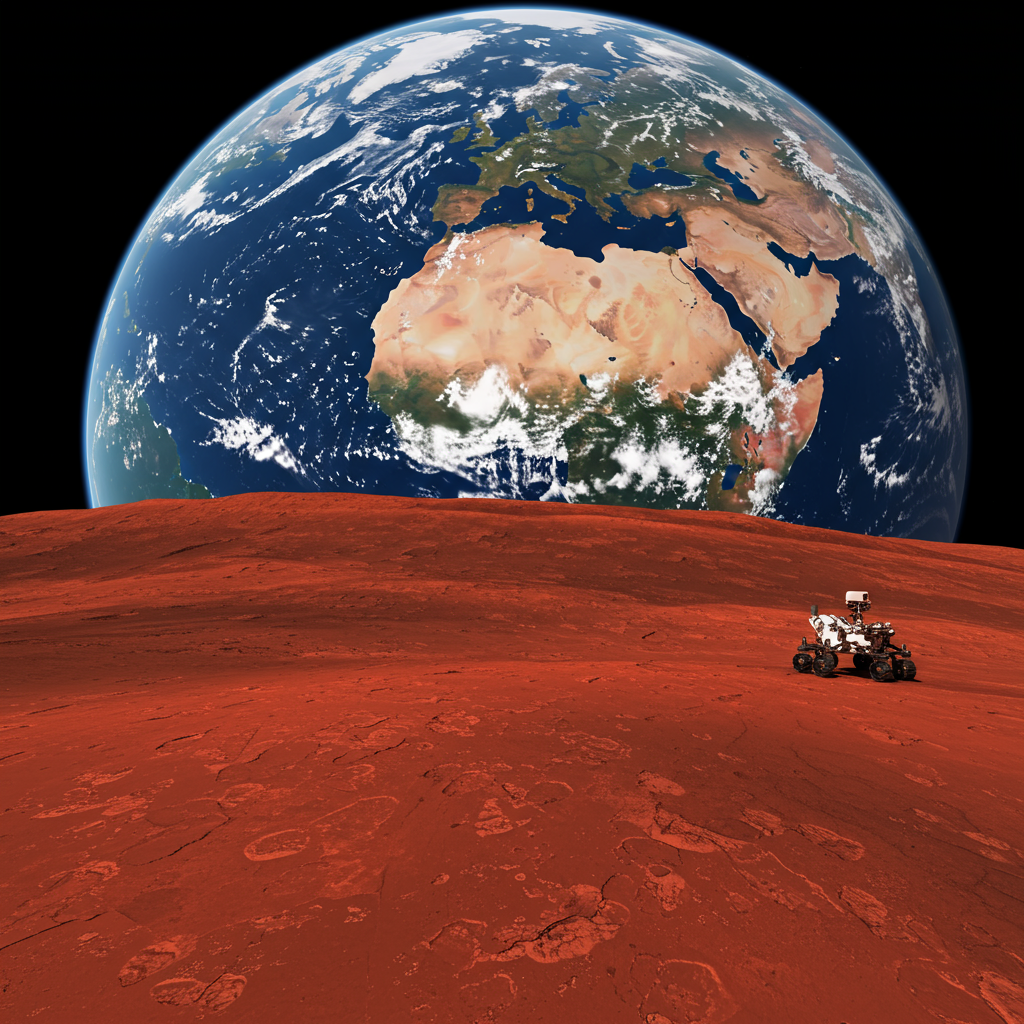Summer nights invite us to gaze skyward, seeking the fleeting beauty of “shooting stars.” While the renowned Perseid meteor shower often steals the spotlight each August, stargazers should adjust their plans for 2025. This year, lunar interference will significantly dim the Perseids’ peak display. Fortunately, a spectacular alternative awaits this week, offering prime viewing conditions for celestial enthusiasts.
Why the 2025 Perseids Might Disappoint
Historically, the Perseids are a highlight of the annual meteor calendar, promising dozens of bright streaks. However, in 2025, the moon will be a few days past full around the Perseids’ anticipated peak (around August 12). This bright lunar phase will cast a substantial glare across the night sky, effectively washing out all but the very brightest meteors. According to planetary astronomers like Nick Moskovitz of the Lowell Observatory, this intense moonlight acts as a “killer,” making the Perseids “not all that compelling” this year for most observers. For context, the 2024 Perseids offered excellent viewing due to a dark moon, highlighting how much lunar conditions can impact visibility.
Your Best Bet: Late July’s Dual Show
Instead of waiting for a potentially obscured Perseid display, turn your eyes skyward this week, particularly on the night of July 29 extending into July 30. During this window, the moon will be only about 25% full, providing significantly darker skies and an ideal backdrop for two lesser-known, yet active, meteor showers: the Southern Delta Aquariids and the Alpha Capricornids. Together, these two showers could deliver a combined rate of 20 to 30 meteors per hour under optimal conditions.
Understanding the Cosmic Dance of Meteor Showers
What exactly are these dazzling streaks across the night? Meteor showers occur when Earth, in its orbit around the sun, plows through a trail of cosmic debris left behind by a comet or, less commonly, an asteroid. These tiny bits of rock – often no bigger than grains of sand or dust – collide with our planet’s atmosphere at incredibly high speeds, sometimes reaching 37 miles per second. The extreme friction generated causes these minuscule particles to heat up and incandesce, creating the brilliant flash of light we call a “shooting star.” While they might appear as substantial streaks, Hunter Miller, an astronomy educator with the Adler Planetarium, emphasizes their minuscule origin.
The Southern Delta Aquariids, for example, originate from the debris of Comet 96P/Machholz. The Alpha Capricornids are linked to the comet 169P/NEAT. Each comet leaves a distinct trail, influencing the characteristics of the meteors we see. Different elemental compositions within the meteoroids can even cause varying colors, from green-yellow to flashes of red or violet, as observed by NASA astronomers.
Essential Tips for Optimal Meteor Shower Viewing
Maximizing your chances of witnessing these celestial spectacles requires a bit of planning and patience.
Timing is Key: The best viewing window for most meteor showers is in the early hours of the morning, typically after midnight and before dawn. This is when your location on Earth rotates to face the direction of the incoming meteoroids.
Seek Dark Skies: Artificial light pollution is the biggest enemy of stargazing. Drive away from city lights to a location with minimal ambient light. Rural areas, state parks, or designated dark-sky preserves are ideal.
Allow Eye Adjustment: It takes anywhere from 15 to 30 minutes for your eyes to fully adapt to the dark. Resist the urge to check your phone, as even a quick glance at a bright screen will reset your night vision, ruining your dark adaptation.
Drop Your Devices: As planetary astronomer Nick Moskovitz advises, “Put your cellphone down… Turn that screen off.” The glare from screens significantly impairs your ability to see faint meteors.
Comfort and Position: Bring a comfortable reclining chair or a blanket to lie on. You’ll be looking up for extended periods. Dress warmly, even on summer nights, as temperatures can drop, and consider mosquito repellent.
Direction of View: For the Southern Delta Aquariids, those in North America should position themselves with an unobstructed view of the southern sky. For other showers, meteors can appear anywhere across the sky, so a wide-open view is always beneficial.
What to Expect from This Week’s Showers
While the Southern Delta Aquariids provide a steady stream of meteors, the Alpha Capricornids offer a unique treat. Though they don’t produce as many meteors, when an Alpha Capricornid does appear, it’s often described as a “slow fireball” streaking across the sky. These brighter, more dramatic events are worth staying patient for, potentially offering that one spectacular memory during your stargazing session. Unlike the faster Perseids, the Alpha Capricornids’ slower speed can make them appear more luminous and sustained.
Remember, meteor showers aren’t confined to a single night. Activity often extends for several days before and after the peak, especially with “peppered” summer skies hosting overlapping events. If clouds obscure your view on the peak night, try again the following evening.
The Perseids: Still Worth a Glimpse?
Despite the challenging lunar conditions in 2025, some astronomers, including Hunter Miller, suggest the Perseids might still be worth attempting to catch. The Perseids are renowned not just for their quantity but also for producing particularly bright meteors, known as fireballs. These brighter streaks may still pierce through the moon’s glare.
Looking ahead, 2026 is forecast to be an exceptional year for the Perseids. Predictions suggest an “outburst,” meaning an unusually high number of meteors – potentially hundreds per hour – coinciding with a dark moon. This rare combination could make the 2026 Perseids a truly unforgettable event, well “worth staying up for.”
The scientific community’s detailed meteor shower predictions are not just for amateur astronomers. This research is crucial for the satellite and spaceflight industries, helping them understand and safeguard their assets from incoming space debris, underscoring the practical importance of tracking these celestial phenomena.
Frequently Asked Questions
What causes meteor showers and “shooting stars”?
Meteor showers occur when Earth passes through a stream of debris left behind by a comet or asteroid orbiting the sun. These “shooting stars” are actually tiny particles, often no larger than grains of sand, that burn up due to friction as they enter Earth’s atmosphere at high speeds. This incandescence creates the bright flash of light we observe, often displaying various colors depending on their chemical composition.
What are the best conditions and essential tips for viewing meteor showers?
For optimal viewing, find a location far from city lights with a wide, unobstructed view of the sky. The best time is typically after midnight and before dawn. Allow your eyes 15-30 minutes to adjust to the darkness by avoiding all light sources, especially cell phones. Bring a reclining chair for comfort, dress warmly, and be patient, as meteors can appear anywhere in the sky.
Why are the Perseid meteor showers challenging to see in 2025, and what are the alternatives?
In 2025, the Perseid meteor shower, peaking around August 12, will be significantly obscured by a bright, nearly full moon. The moon’s glare will wash out most of the dimmer meteors. A much better alternative for 2025 viewing is the combined Southern Delta Aquariids and Alpha Capricornids showers, which peak on the night of July 29-30, when the moon will be only about 25% full, ensuring darker skies and potentially 20-30 meteors per hour.




